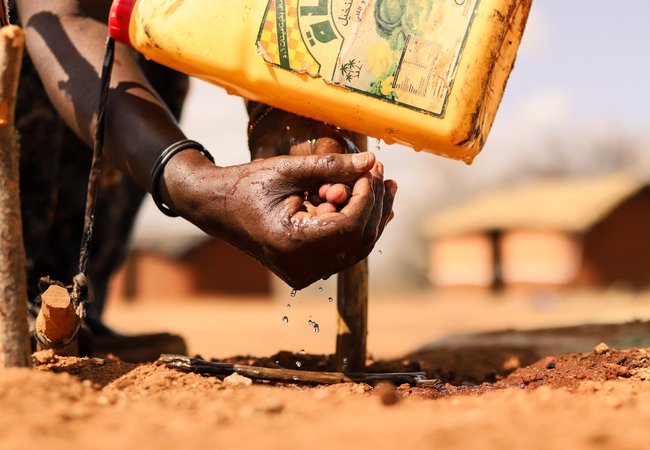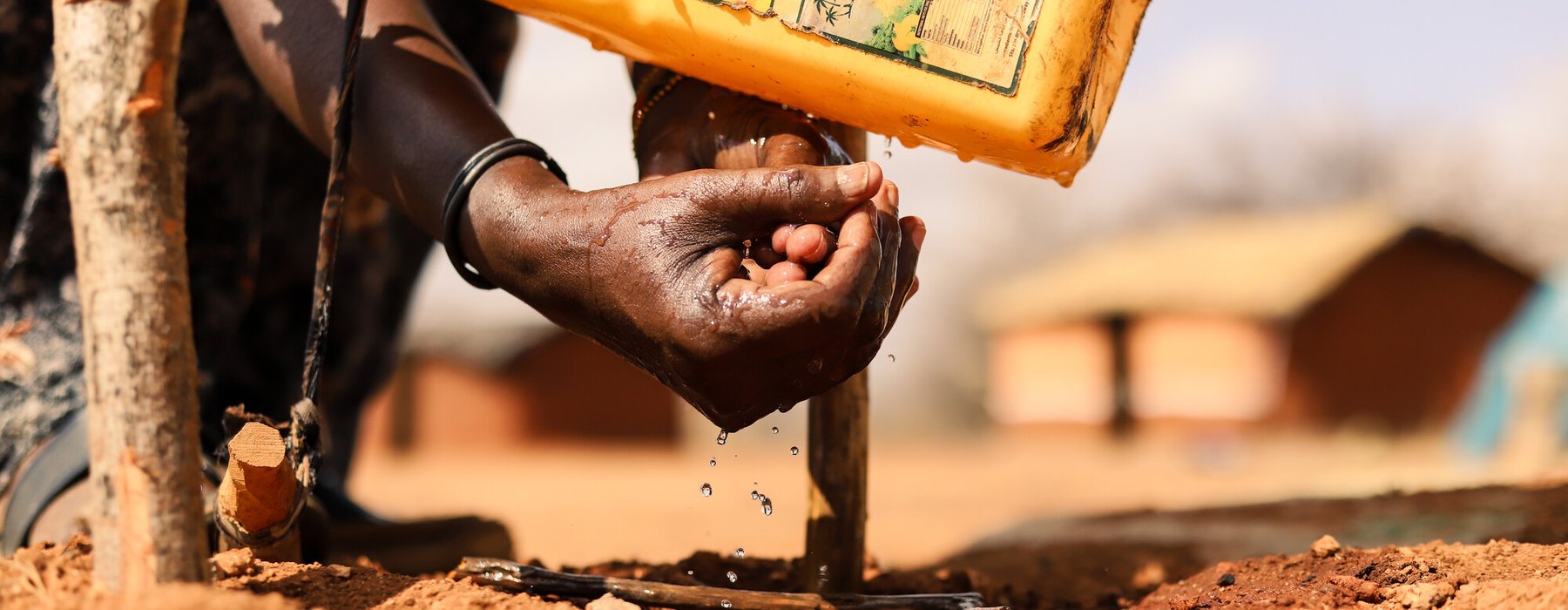- Facts about droughts: The causes and impacts
- Climate change and drought
Galmo washing her hands after fetching water from the newly established community water project in the area. Image: Mark Wahwai/Oxfam


Climate change and drought
Climate change is driving ever more extreme weather events, including drought.
As temperatures warm, water evaporates, parching the land and the air. Regions across the world are affected.
In East Africa, land is turning to desert and famine may take hold.
Despite everything, people are finding innovative ways to tackle drought, and Oxfam is working beside them to scale up those efforts.
How does climate change cause drought?
Global warming has a direct link to drought. Burning fossil fuels such as coal, oil and gas produces carbon dioxide and other greenhouse gases.
Wealthy countries have been using these fuels to power homes, industry and vehicles for centuries – and have grown rich on it. As these gases build up in the atmosphere, they trap heat much like the glass roof of a greenhouse.
The hotter it is, the quicker water evaporates. As global temperatures rise, the climate changes. On the one hand, the land dries and cracks. On the other, the water vapour that has been drawn into the air travels elsewhere, creating clouds and rain. The result is more floods, fires and drought, which destroy lives, livelihoods and the natural world. Climate change is driving drought into countries everywhere. For instance, climate change has made the drought in East Africa 100 times more likely.
Which countries are most impacted by droughts?
Drought afflicts countries across the world, but it hits people in low-income countries the hardest. These countries are responsible for only a tiny fraction of global carbon emissions and therefore global warming, yet they shoulder the biggest burden when it comes to climate change.
The effects are devastating.
With little to no water nearby, people, especially women, must walk long distances to collect it. The water they find may not be clean and this can lead to serious health problems. Without water, crops can’t grow. Animals perish. Hunger dominates. Rates of poverty, disease and death rise.
Extreme drought affects Africa more than any other continent. People in Southern Africa and East Africa are living this nightmare right now.
After five years of failed rainy seasons, they’re facing the worst drought in 40 years. Extreme drought is pushing millions of people here out of their homes and into poverty. The situation is at crisis point.
How is Oxfam helping people experiencing extreme drought?
Communities themselves are leading the way in using sustainable methods to weather extreme drought. And Oxfam is working alongside them to expand those efforts. From providing drought-resistant seeds to promoting climate resilient farming practices, we’re supporting communities to grow their way out of the drought crisis.
It doesn’t end there. People in these communities are the experts on what it’s like to live with drought. We’re amplifying their calls for urgent climate action, demanding system change, not climate change. It will take all of us to make sure people in East Africa and beyond can get the tools they need to withstand the devastating impact of climate change.
Take action to tackle climate change
The climate crisis affects us all. Often, it seems unstoppable but it’s not a done deal. We all have a role to play in finding sustainable ways of slowing it down and reducing its impact.
Find out what you can do to tackle climate change.